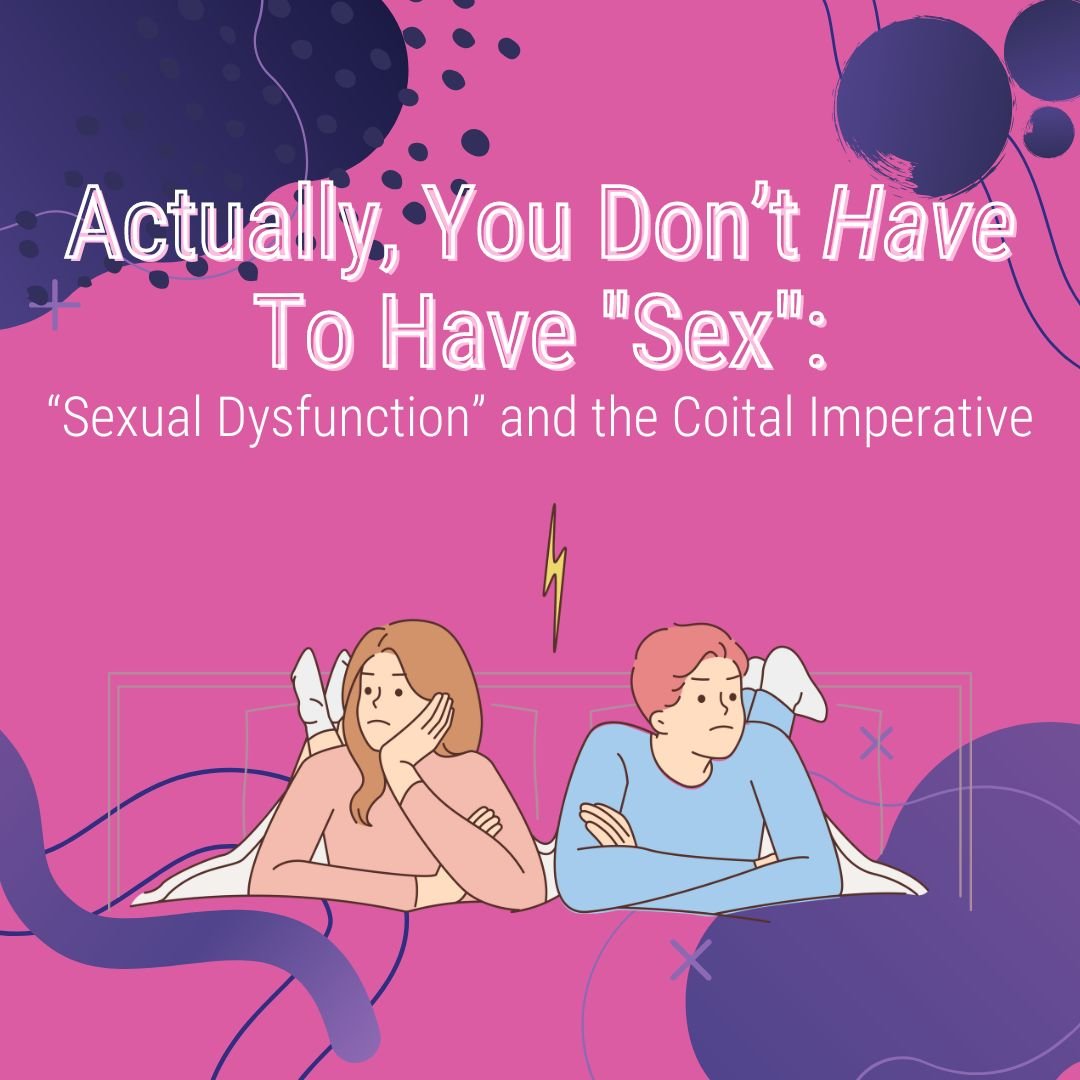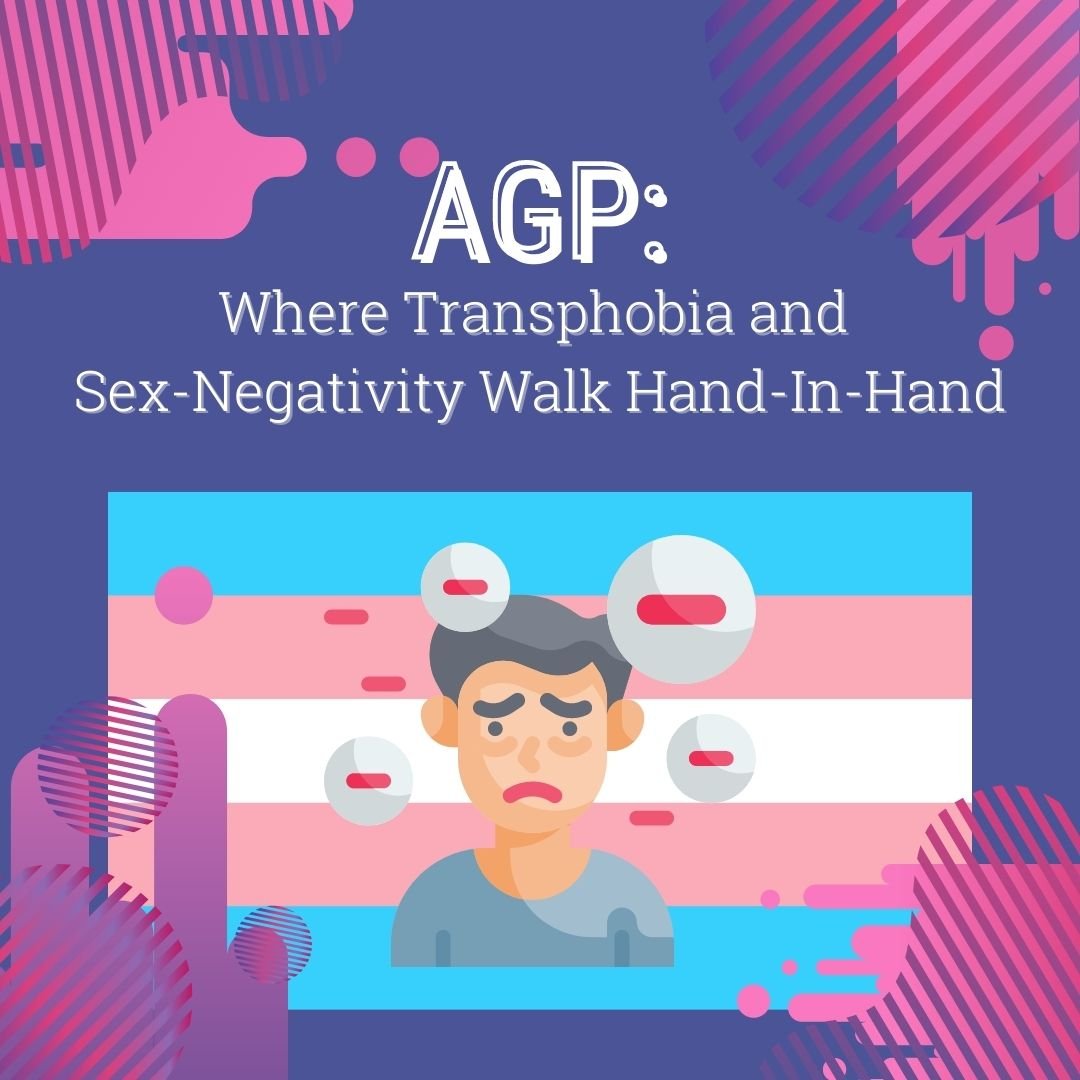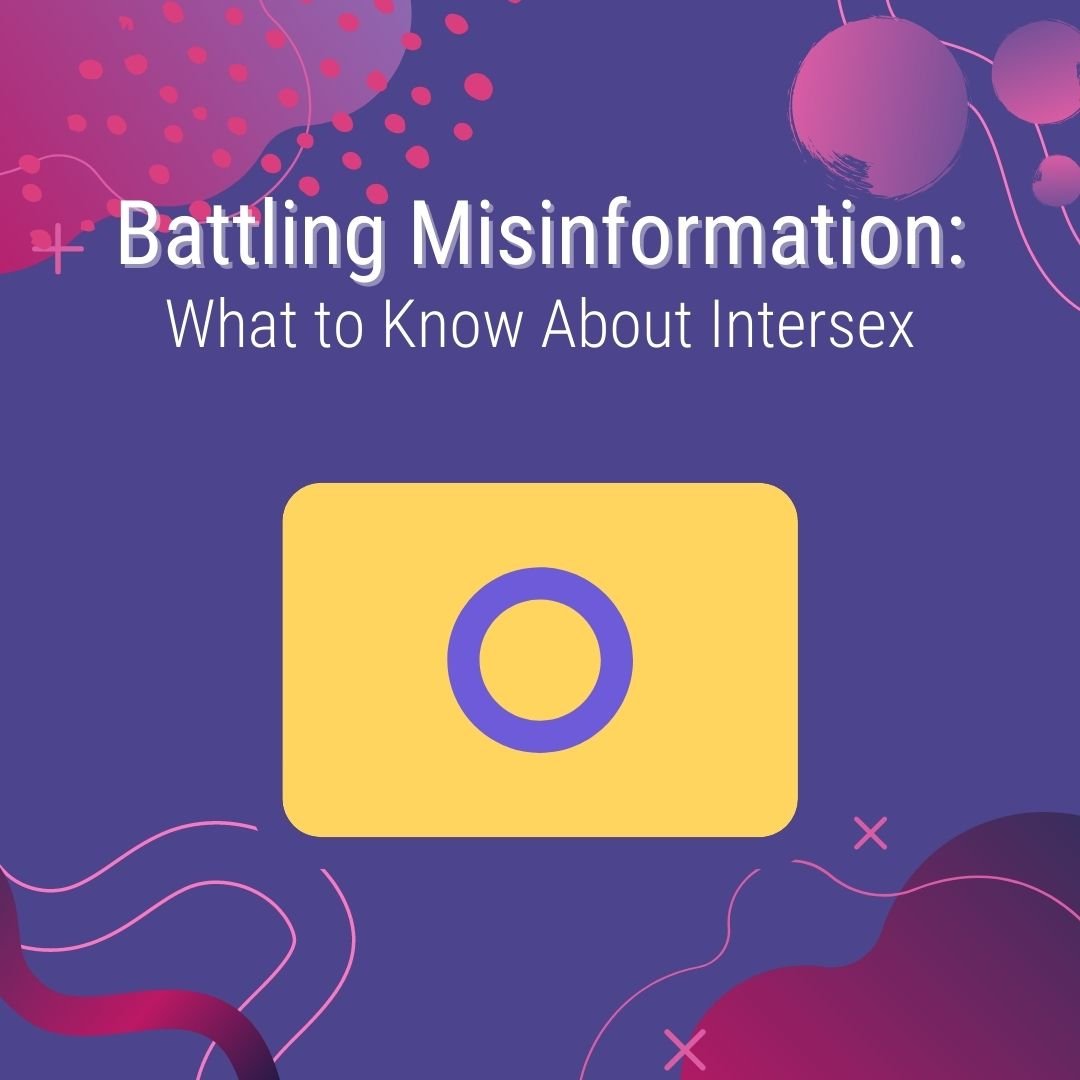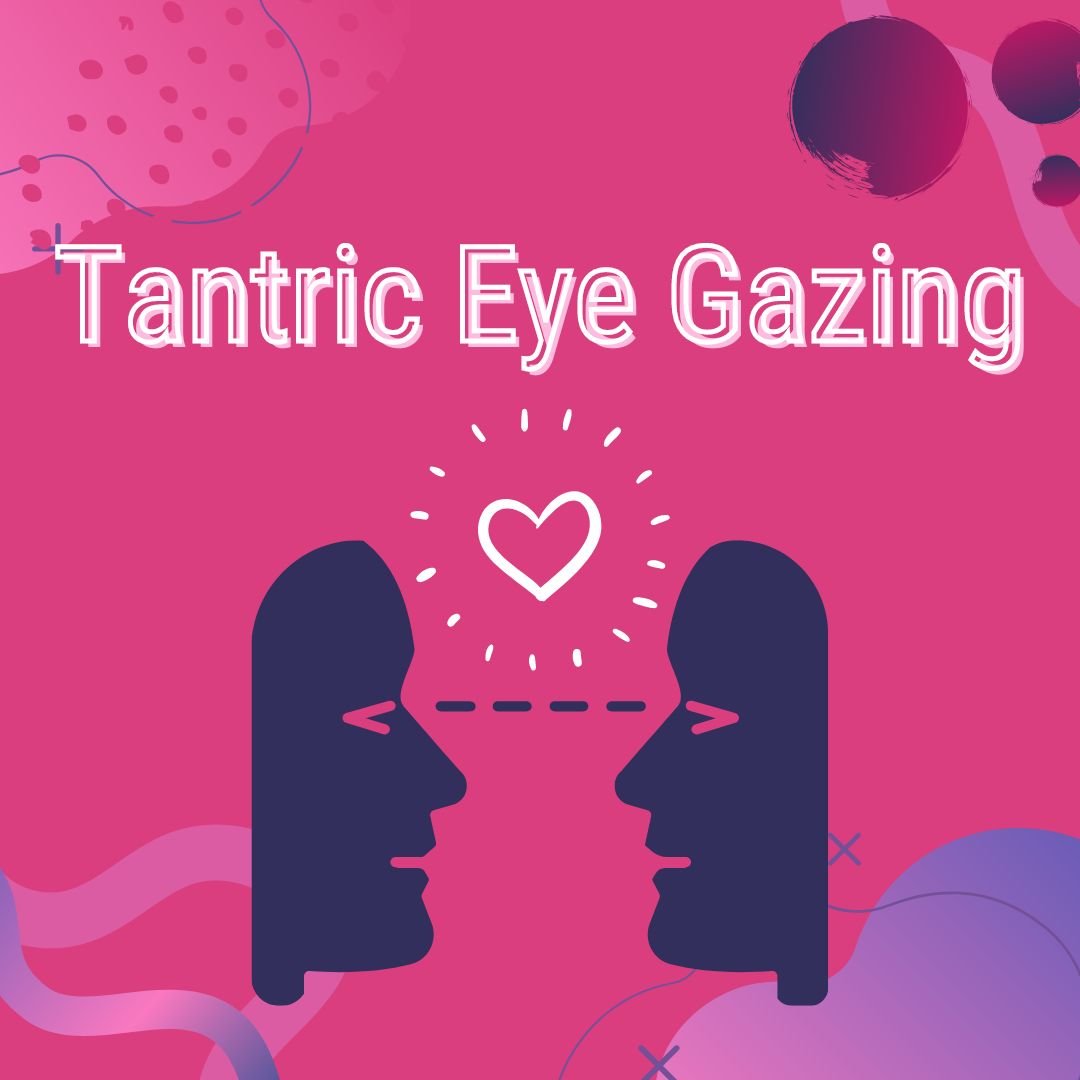It is true that parenting is a never-ending job. In the US today, parents of LGBTQIA+ children, and the children themselves, continue to battle for basic human rights and better representation. To be a sex-positive parent is to be a sex-positive person, which is something many might struggle with due to their own upbringing and current societal standards. Being a sex-positive parent means you are a true ally to your child, their friends, and the world as a whole. Being a sex-positive parent means you are concerned with the backward trajectory of our country and are working toward a future where everyone is safe, regardless of their identity. Being a sex-positive parent means your child knows they can come to you with their problems without fear of shame, rejection, or violence.
Highlights From SHA's Conference Weekend: Kink For Helping Professionals
Nothing starts the new year better than a kinky conference, and that’s exactly what took place this weekend. Hosted by the wonderful Midori, the supernova of kink, we covered a wide range of topics—ranging from negotiation and kink, to kink and neurodiversity. The day started with Midori providing us with an excerpt from her presentation “Best Kinky Advice Nobody Told You,” in this, we went over common terms in the kink community such as sadist, bottom, fetishist, and dominant, questioning our own definitions and beliefs on them. Here we faced the nuance of kinky language and the importance of context and specific terminology. We were provided with a wealth of information through the useful analogies Midori gave to us, as well as learning the importance of speaking in verbs rather than nouns—instead of stating “I am a dominant” it should be “I want to dominate you tonight” which allows someone to separate their sexual appetite from their identity.
Jealous of Their Ex? How to Deal with Retroactive Jealousy
Jealousy can be a common occurrence in any relationship, whether that be when the waiter only pays attention to your partner or someone seemingly paying them a bit too much attention at a party. Whilst having these fleeting feelings in the moment is normal, issues occur when these feelings of jealousy stem from insecurity about who your partner has been attracted to, or dated in the past. Retroactive jealousy refers to envy and resentment towards your partner's previous relationships. Conversations and interests about your partner's previous relationships are normal and common, but when interest becomes an obsession, it can turn into something unhealthy and destructive. Mental health counselor Monica Miner explains that retroactive jealousy often involves tactics to gain information about the partners’ pas
Living, Together: A Singlet’s Guide To Plural Allyship
There’s a queer form of existence you’ve probably never heard of (especially if you’re cisgender) even though it’s estimated that at least 1% of the population experience it: Plurality. Plurality (also known as Multiplicity) refers to “all experiences of being or having, more than a single individual, within a single body.” In simplest terms, it’s a descriptive term and identity label for people who aren’t alone in their brain – for minds that contain multiple conscious individuals. You might feel confused: How could this be real? Isn’t that some kind of a disorder? If Plurals are so common, why don’t I know any? That’s perfectly alright. Learning about experiences outside of our own can be disconcerting when they’re incongruent with our assumptions, and Plurality is so overlooked and stigmatized culturally that most of us haven’t had a chance to educate ourselves on it yet. I wasn’t able to grasp Plurality until I took a breath, reminded myself of my goal to be ever empathetically curious, and took steps to educate myself on the Plural experience (well, experiences). So, I encourage you to stick with me while I explain Multiplicity more deeply, address some common misconceptions, and help you begin your journey towards being the best ally you can to your Plural peers and loved ones.
Unfortunately, the marginalization of Plurality has resulted in a lack of shared vocabulary amongst Plurals and those who live in bodies alone. Because of this, we’ll need to cover some terminology before we jump in. As with just about any marginalized community, Plurals don’t all prefer the same words for themselves. Some terms can be accurate for some while being unhelpful or offensive to others. So, I’ll share with you the most generally accepted terminology I’ve found in my research and my personal experience with Plurals, but it’s always a good idea to ask people what words fit for them and those they share a body with. Often, groups that share a body are called “systems.” Many have a system name (also called a collective name) that refers to the whole group, sort of like a family name. Some examples might be “The Willows,” “The Solidarity System,” or “The Loving Collective.”
Where to Find Ethical Porn 2.0
Pornography is something that most of us engage with from a relatively young age. As we grow up, it seems that people develop a clear anti-porn or pro-porn stance regardless of whether or not they viewed pornography behind closed doors. The reality of the situation is less opinionated. Pornography is beautiful, but it is only truly good when its creation and distribution are entirely ethical. To put it bluntly, porn is either morally and ethically sound, or it’s not. Unfortunately, most mainstream pornography is not produced with ethical standards in mind. As a result, the scenes you watch on popular tube sites like Pornhub could, at best, not fairly compensate the performers (especially female performers) or, at worst, include traumatic events like sexual assault or rape. The majority of mainstream porn relies on problematic gender stereotypes for their storylines, often depicting women as submissive vehicles for male penetration and subsequent domination. Dom and sub-dynamics do healthily exist in BDSM but follow a strict code of consent and respect that most tube sites fail to depict these essential boundaries. This can create an in-authentic depiction of sex. In my opinion, there is only one way to help move the industry toward safe, authentic porn creation: for us consumers to engage solely with ethical porn sites and creators.
A Silky Barrier: The New FDA-Approved Latex Underwear
Picture this: it’s getting steamy back at your place after a first date with that woman you haven't been able to stop thinking about from Hinge. Your sexual chemistry is fiery and things begin to escalate quickly. You get anxious because you want to go down on her but have not had the STI talk yet. As if she read your mind, she says, “Hey before anything else happens, I wanted to let you know that I’m wearing this latex underwear that has similar properties to a dental dam for STI protection. I want to keep going, but you can leave my underwear on as you go down there.” As you make your way down, you wonder why you’ve never heard of these underwear before…sexy, safe, and soft…that’s a triple threat!
Many people have probably not heard of latex underwear, but I suspect it’s on its way to being the talk of the town. On April 22, 2022, the FDA cleared Lorals, the thin, stretchy, flavored, disposable underwear, as a barrier when engaging in oral vaginal or oral anal sex. According to Brueck at Insider, “The underwear are only the second form of protection the FDA has OK'd to protect against orally-acquired STIs. (The much older oral sex protection option, dental dams, are pretty unpopular.)” For instance, Carol Queen, a sexologist for the sex shop chain Good Vibrations says “the company sells less than 600 dams per month in the United States, across 13 stores and its website.” Let’s face it, dental dams were not first invented as an STI barrier, they were invented in 1864 for dental surgery. ThankfullyHowever, Melanie Cristol, the creator of Lorals, had a new, less archaic idea.; Melanie Cristol says that she Cristol wanted to make a product that “was made with my body and actual sex in mind.” So, in 2018, Lorals was born. A company that sells single-use underwear for people with vulvas.
Looks, Love, and Ambiguity: Queerness In Patti Smith’s “Just Kids”
Confession: I only became interested in Patti Smith because I thought she was a lesbian. While I was standing in a gallery exhibition on the history of punk music, a photo caught my eye. The cover art for Horses (1975) is nothing if not captivating. Smith makes direct eye contact with the camera, displaying a confident yet slightly dreamy expression in a white button-up and a black jacket tossed casually over one shoulder. The picture has a sapphic magnetism that led me quickly to the artist’s music library. And – wouldn’t you know it? – her most popular song is about having sex with a woman. Once I learned she was lifelong best friends with my favorite photographer, Robbert Mapplethorpe, I couldn’t help but follow my mother’s advice and read her biography Just Kids (2010). You can only imagine my dismay when, hours into the audiobook, my mother broke the news to me that Patti Smith is, in fact, heterosexual. “Gloria” (1975) may well be about sex with women, but Patti Smith was only covering an old favorite not pronouncing her sapphism. The thing is, even after I received this news I didn’t feel quite convinced. Sure, part of this was just denial. What do you mean she’s straight? – she’s so cool! Beyond this, though, was something else. Despite centering a heterosexual cisgender woman’s relationship with a man, the life story outlined in Just Kids is anything but heteronormative. Smith’s presentation is androgynous, her art breaks gender expectations, and the connections she forms disrupt cultural expectations. Patti Smith may not be queer in the LGBTQIA+ sense, but her life certainly has queered norms around gender and relationships.
Actually, You Don’t Have To Have Sex: “Sexual Dysfunction” and the Coital Imperative
I work in a store that sells adult toys and novelty products and, for the most part, I love my job, but one common costumer experience has always rubbed me the wrong way. Quite often, a (presumably) straight couple comes in to find something to “fix” what they perceive as a problem: the girlfriend’s disinterest in sex. Instead of reaching for our bondage equipment, a vibrator, or even a sexual card game to inspire new intimacy, they always seem to inquire about our selection of “natural female enhancement pills.” I do not feign to know the personal lives of these people and I never want to judge others for their sexual desires. At the same time though, paying ten dollars for a singular pill just to “correct” the fact you don’t want to have sex doesn’t seem like it’s always a reaction to a true desire to have it. I worry that many of these couples are operating under the assumption that “sex” (possibly just penis-in-vagina sex) is somehow necessary for a “good” relationship; a belief which, when followed to its logical conclusion, requires a remedy to someone simply not wanting to do a certain activity. Of course, this is a complex, multilayered issue. I don’t want to shame (let alone blame) anyone for having this view of sex. It’s unfortunately a very normative idea that is frequently reinforced. At the same time, this understanding of sexuality is limiting, often disrespectful of one’s true desires, and, in some cases, even physically dangerous.
Sex Tape Guide: How to Safely Create Porn with Your Partner(s)
When people hear “sex tape,” they typically think of the hundreds of celebrity sex scandals that have emerged in popular culture. Stars from the likes of Tommy Lee and Pamela Anderson to Kim Kardashian and Ray J have been front and center in sex tape scandals. While there’s often much speculation about how these tapes get released, there’s no denying that the individuals featured in the tapes are victims of a privacy breach. If a person is in the public spotlight keeping a sex tape private and safe from such security breaches are more complicated. This is because society often sees celebrities as superhuman people, and it’s difficult to imagine them engaging in normal intimate activities such as sex. For women celebrities, the leaking of a sex tape allows the media to capitalize on their sexualization of a star. For women like Pamela Anderson and Kim Kardashian, who have often been described as “bombshell” women, the leaking of a sex tape only leaves society with more room to sexualize them by living out their voyeuristic fantasies of watching those women engage in sexual acts. If your name is in the public eye, you may want to think more carefully about creating a sex tape, and if you do decide to create one, make sure you have a plan for what you would do if the tape were ever leaked.
Fortunately, most of us are not famous, and the media would not be looking for our sex tapes if we created them. This makes the process a bit safer for the average person, though it’s still not impossible for someone in the public eye to create sex tapes and avoid a sex tape scandal. In my opinion, sex tape scandals are over-dramatized, and the shame associated with them is unfair. All of us have sex, and there is nothing wrong with wanting to capture the art and beauty of sex. Sex is art, art that can be sensual and soft or dirty and rough. A sex tape is a medium for the art of sex, and it’s unfair that people get shamed if a tape portraying intimacy they created for their own eyes gets leaked. It’s time that we break the stigma surrounding sex tapes once and for all. Creating a sex tape can be a beautifully thrilling experience. Every sex tape is unique because it depicts intimacy between a particular group of people and portrays a sexual encounter that only exists in that film. If you want tips on creating your first sex tape, keep reading. You may be surprised to find out that there are more pros than cons regarding sex tapes. If you’re concerned about cyber safety when creating your porn, don’t worry, we’ve got you covered there too!
So You Might Be A Sissy: A Beginner’s Guide To Sissification
Have you ever been called a sissy before? As you probably know, “sissy” is a derogatory term that’s used to describe men or boys as weak, effeminate, cowardly, and/or gay. It’s also sometimes used as a slur against trans women and transfeminine people. As a term, it has its roots in that perfectly horrible trifecta that seems to dictate toxic masculinity: misogyny, homophobia, and transphobia. But for some people being a “sissy” isn’t an accusation to defend oneself against. Instead, “sissy” can be a kinky headspace, a sexual role to take on, or even an important part of one’s identity. So, let’s talk about sissification kinks and what it means to be a sissy. We’ll explore the eroticism in sissification fantasies, ways sissification can look in real life, and how you can start exploring being a sissy if it appeals to you. Along the way, we’ll dispel common myths and address some of the harmful ideas that circulate in sissification spheres.
Sissification ranges widely, but most sissification has one thing in common; it fetishizes the movement from masculine to feminine in presentation and/or identity. Sissification fantasy narratives are often about cis men being compelled to adopt a feminine presentation and typically feminine social role: in other words, to become a “sissy.” More often than not, this includes sexually “servicing” or being penetrated by men, although many sissies are not particularly interested in men as romantic partners. When this transformation is pushed onto the sissy by someone else this is often called “forced feminization,” which some people consider a synonym to “sissification.” However, many sissy stories do not include this coercive narrative per se. Often sissy fantasies revolve around the protagonist unwittingly (or foolishly) exposing themselves to corrupting forces which “sissify” them, such as hypnotism or other media about sissification. For some people becoming a sissy is just a fantasy, for others it’s a part of their kink dynamic/s, and for others still it’s a lifestyle.
International Fetish Day
Before spreading to the rest of the world as International Fetish Day in 2009, National Fetish Day was first observed in the United Kingdom on January 21st, 2008. Initially intended to raise awareness of fetish, kink, and BDSM communities while also standing in opposition to UK law criminalizing the possession of “extreme pornography,” this day of observance quickly caught on elsewhere as people across the world donned purple (a color commonly associated with BDSM communities) in support of sexual freedom, autonomy, and self-determination.
Celebrated on the third Friday of each January, International Fetish Day overlaps in spirit with related observances such as World BDSM Day (celebrated each year on July 24th) and International Kink Day (celebrated each year on October 6th). A glance at these three distinct days might lead us to ask what is actually a pretty common question: what’s the difference between a fetish and a kink? And how do they each relate to BDSM?
What is AASECT?
AASECT is the American Association of Sexuality Educators, Counselors, and Therapists. Among the organization’s functions is certifying professionals who want to better help their customers, clients, or students in the realm of sex. Individuals can enter the fields of therapy or counseling and the related fields of social work, medicine, and education with little knowledge or training in sexuality, preventing them from fully helping clients, patients, or students. AASECT’s stringent requirements for certification make certification valuable for professionals no matter where they are in their careers and establish the organization as a leader in the field of sexuality. Although many people know AASECT because of their certification options, this organization also publishes two academic journals, which are available at a discount for members: the American Journal of Sexuality Education and the Journal of Sex Education and Therapy. Professionals can similarly expand their knowledge and networks by attending the annual AASECT Conference, which hosts a SAR, and the virtual AASECT institute. The organization offers multiple scholarship opportunities for members who wish to attend.
Retired Swimmers: The History of the Vasectomy
As the youngest of two in my family, growing up, I always wished for a younger sibling. I was obsessed with my baby dolls; it seemed like a dream to have a real baby every day that I could help take care of. I begged my parents. I even put “a little sister” on my Christmas list. They always chuckled and said, “No, honey, our family is just right with you and your sister.” That didn’t stop my persistence, and finally, my parents had to sit me down and tell me that a younger sibling was literally not possible. I cocked my head, “what do you mean?” This was my first exposure to the word “vasectomy.” I remember feeling betrayed by my parents. My Dad underwent surgery so they could never have kids again without even asking me first, I thought to myself. I’m giggling to myself as I write this…of course, they did, Sage, that makes perfect sense. Why should my mom have to go back on birth control after having two kids? Being a mom is enough responsibility!
I often hear about vasectomies as something people do after they are done having kids, rather than a form of contraception. However, in reality, a vasectomy is deemed a form of male birth control in which the tubes that carry sperm and cut and sealed. The whole procedure usually takes around 20 minutes, and you can even bring a support person to be in the room with you, as well as headphones to listen to music during the procedure. If you type in “Vasectomy Playlist” on Spotify, you can find ones that others have already made! The patient will be given a local anesthetic and will have the option to take some medicine to help relax. And, the best part is that this procedure will not take away from your sexual satisfaction! After a vasectomy, you are still able to get an erection, make semen, and ejaculate—the semen just does not contain any sperm. Let’s flip through a brief history of the vasectomy to learn more together.
AGP: Where Transphobia and Sex Negativity Walk Hand-In-Hand
A quick note before we start: this blog post focuses on transphobia (specifically transmisogyny and the rhetoric of trans-exclusionary so-called radical feminists) and is likely to be triggering, especially to trans women and transfeminine people more broadly. It will also contain quoted transphobic language and discussions of violence and discrimination. If you’d like to read something a bit more light, maybe you can check out my piece on words for genitals or cuckolding. If you’d like a more in-depth look at the topic at hand I recommend “Autogynephilia”, a YouTube video by Natalie Wynn, which acted as a primary source for this piece as well as Jessie Gender’s “The Continually Escalating Anti-LGBT Rhetoric” which, in part, explores the connection between sex negativity and anti-queerness more generally.
Trans people have arguably been a bigger part of the public consciousness than ever in the past decade and, although that’s broadly speaking a very good thing, the backlash has been horrific. I came of age during the early days of this current culture war – surrounded by cringe compilations and the one joke about attack helicopters copy-pasted to the point of absurdity. On the one hand, I’ve seen acceptance for and education around trans people flourish. There are (not enough) gender-neutral bathrooms at my school, I see progress flags around my neighborhood all the time, and even my grandparents have started to remember to call my nonbinary friends “they.”
How Sleep Affects Your Sexual Functioning
Sometimes when I haven’t gotten a good night’s sleep, I feel barely human, and I’m sure you’ve all been there. While you might notice obvious signs that you’re not getting enough quality sleep, such as difficulty concentrating, it’s all too easy to overlook how it impacts other areas of your life. Yes, I’m talking about your sex life! The connection between sleep and sex has been studied multiple times, indicating the importance of a good night’s sleep to essential to healthy sexual functioning. Of course, knowing this won’t make you a perfect sleeper, but when you improve your sleep hygiene, you will likely see benefits in and beyond your sex life. One study found that sleeping an extra hour per night correlated with a 14% increase in sexual activity and a libido boost the next day for female participants. If a single hour can make that much difference, imagine what chronic sleep deprivation can do to your sex life. It’s bad enough to find yourself without any desire to have sex. If you do have sex, decreased arousal might mean it doesn’t feel as good or it’s difficult to have an orgasm, which is understandably frustrating and might further lower your interest in sex. Perhaps surprisingly, a lack of sleep or poor quality sleep can sometimes correspond with increased arousal. But I wouldn’t count on poor sleep making my sex life better.
Sex Toys, but For Cows
Animal rights and their claim to autonomy have been a hot topic over the last few years. More than ever are people turning vegetarian and vegan, understanding that the animal can feel pain—and that the slaughter and unfair conditions they may be kept in are no longer acceptable. We now advocate for the animals to be kept in a way that improves their quality of life rather than force them to suffer and live in inhumane conditions such as that of factory farms. One person that has gone above and beyond in ensuring animals can experience pleasure rather than pain is Ece Tan, the inventor of sex toys for cows. Ece Tan has looked at the invasive procedures that are forced upon cows, such as milking and artificial insemination being incredibly uncomfortable for the cow to go through. This is where the “Happy Cow” project comes into play:
Crushin P***y, Marry a Man: What The Lonely Island Taught Me About Sex and Gender
Maybe it’s just my obsession with these subjects, but I couldn’t help but notice how the trio’s albums are absolutely saturated with humor that plays with male identity, misogyny, and queerness. In fact, this music may be partially responsible for inspiring my obsession. The Lonely Island introduced me to the concept of docking for the first time; they made my nine-year-old brain seriously question why men didn’t wear condoms 24/7; they gave me space to laugh-along to “grown up humor” while simultaneously realizing how little I knew about sex and how much there was to learn. These popular comedy albums shaped how I (and probably countless others) understood the cultural landscape of sexuality and gender I was growing into. So, what was that landscape they portrayed? Well, like most media does, The Lonely Island’s music often upholds cultural assumptions that can be harmful and inaccurate. There are plenty of problematic ideas on gender and sexuality reflected in their work, and plenty of old tropes regurgitated for laughs
Battling Misinformation: What to Know About Intersex
We have seen a great deal of movement in the LGBTQIA+ community in recognition and acceptance. Whilst there is progress, a group that is often ignored or told misinformation about is intersex individuals. Intersex can be defined as an “umbrella term to refer to people who carry variations in their reproductive and sexual anatomy that differs from what’s traditionally considered male or female. An intersex person can appear to have one kind of genitalia on the outside, and another internally.” With so much ignorance and false information spread about intersex individuals, they are at harm by the medical system and uneducated individuals.
Tantric Eye Gazing
Tantra, a 3,000-5,000-year-old philosophy with bases in Hinduism and Buddhism, allows one to deeply connect with their own energy with the ultimate goal of achieving spiritual enlightenment. Practices such as meditation, mantra repetition, and rituals are typically used to access this deep, energetic connection. More recently, though, tantra-based yoga and sex practices have become popularized in the Western world. This 1900s interpretation of tantra aims to increase the spiritual aspect of sex, making sex a more holistic and self-aware activity. For those wanting to explore the spiritual side of their sex life, tantra might be a good place to start.
Specifically, tantric eye gazing offers the opportunity to connect with oneself and/or their partner(s) through focused vision. Right off the bat, though, it’s important to make the distinction between gazing and staring. While staring can be penetrative and forceful, gazing is gentler and always consensual. As the eyes are the most expressive facial features, they can allow for a deeper understanding of your partners’ desires and emotions. Moreover, visual attention reflects the stimulus most relevant to the viewer’s intentions. This means that tantric eye gazing can not only make the viewee feel seen, but can also invite the viewer to play a more active role in understanding and pursuing their desires. In this way, tantric eye gazing can be a mutually beneficial partner activity.
A Peek Inside SHA's Hedonism SAR
On December 8th and 9th of this year, 28 students and six facilitators from the Sexual Health Alliance gathered at Hedonism II, a beach-side resort in Negril, Jamaica to discuss all manners of human sexuality. Some of the students were there as part of their first steps into future careers—as sex therapists, sexuality counselors, sexuality coaches or consultants, and more—while others, already established in those careers, were there to enrich their practice and grow their skillset. The common goal of all participants—students and facilitators alike—was to critically examine, reflect on, and reassess their embedded sexual attitudes, ranging from the easily negotiable to the deeply ingrained.
In terms of locale, Hedonism—a clothing-optional resort often frequented by swingers and others of sexually adventurous lifestyles and mindsets—might seem to be an odd choice for a professional training. This particular training, however, was a Sexual Attitude Reassessment (SAR), designed for the purpose of prompting sexuality professionals to identify and explore the boundaries of their comfort zones so that they might bring less bias, judgment, and other such noise into their professional practice. The classroom discussions—focusing on critical reflection and discussion on practices such as BDSM, transgender pornography, consensual nonconsent, and more—provided opportunities to confront our biases in collaborative dialogue with others, re-evaluating and perhaps even re-establishing our own personal limits. Outside of the classroom, the atmosphere of Hedonism provided an immersive, experiential component to the SAR that simply could not be replicated within a classroom. (The sunsets were pretty, too.)





















